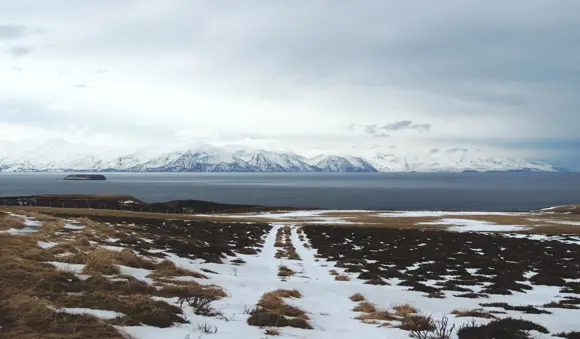The Westfjords’ Only Glacier: Drangajökull

Composed of fallen snow that has been compressed into ice over many years, glaciers are large, dense, icy masses that form on land. Their sheer size and weight mean that due to the force of gravity, glaciers are constantly moving, albeit slowly. It is thought that around 11% of Iceland itself is made up of glaciers. While many of the Icelandic glaciers can be found in the southeastern parts of the country, there is just one to be found in the Westfjords: Drangajökull.
Where is Drangajökull?
This northernmost glacier in Iceland is situated way up in the wilderness just below the Hornstrandir peninsula and more than 200km from the country’s capital, Reykjavik. Its remote location in the Westfjords is one of the more challenging places to reach, but perhaps one of the most rewarding.
Drangajökull is one of the smaller glaciers in the country, occupying an area of just 200 square km. For comparison, the largest glacier, Vatnajökull, occupies an area of 8,100 square km.

The Impact of Climate Change on Drangajökull
Rising temperatures have, thus far, had a limited effect on the glacier, which, unlike many others, has managed to remain fairly stable in size. Unfortunately, the experts have predicted that this is unlikely to last and that it is entirely possible for the glacier to completely disappear by 2050 if temperatures continue to rise.
Things to do at the Drangjökull Glacier
Despite fewer tourists visiting here compared to some of the more accessible glaciers in Iceland, there are still plenty of activities to enjoy that will make your journey more than worthwhile.
Hike to Jökulbunga, the Summit
Although Drangajökull is the most low-lying glacier in Iceland, the hike to the highest peak, which stands at 925km, is exhilarating. You are advised only to do this with a professional guide who has the expertise to get you there and back safely. This is just one of the thrilling hiking trails on offer in the area.
Explore Kaldalón
Kaldalón, which translates to ‘cold lagoon’, is the fjord into which the ice chunks from Drangajökull break, a process which is known as calving. The fjord is well known for its natural beauty and calming atmosphere.
Admire the Midnight Sun
Depending on the season of your visit, you may be lucky enough to be able to witness the natural phenomenon of the midnight sun, as its rays cast across the idyllic horizon in the still of the night. The summer solstice, when the sun never truly sets in Iceland, typically occurs between the 20th and 22nd of June.

Head North to the Hornstrandir Nature Reserve
For even more flora and fauna, a visit to Drangajökull is not complete without a trip to Hornstrandir, an area with luscious plant life and a hive of animal activity. From foxes to puffins, it’s likely you’ll catch a glimpse of various wildlife species, particularly when you look closely at the cliffs. Access to the nature reserve, however, is limited and only specially permitted excursions are allowed during the winter months.
Want to experience the raw beauty of Iceland? The Fosshotel Westfjords is an ideal location to base yourself whilst exploring the Drangajökull glacier and other surrounding attractions such as Rauðisandur beach and the Dynjandi waterfall. We can even provide car rental to make your journey from the airport simple.